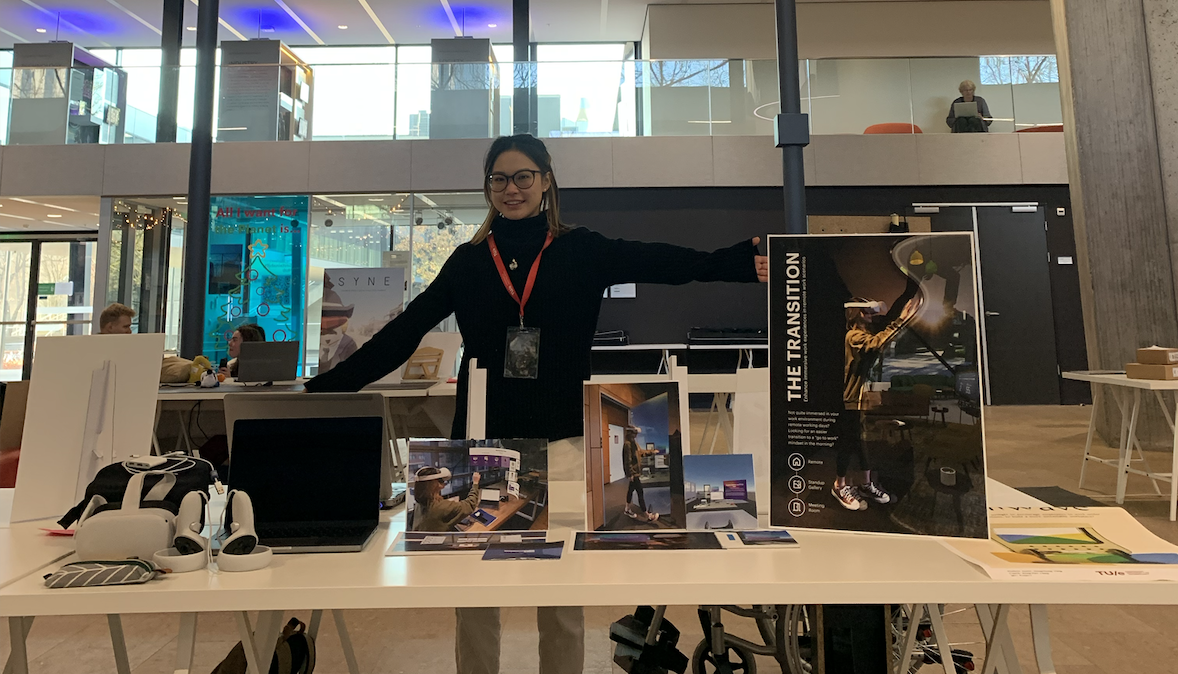
The Transition
Enhance the immersive experience of telecommuting.
Date
Sep 2022 - Jan 2023
Areas
VR Product Design Service and Experience Design
role
Unity developer Interaction designer UX designer
Description
Under the general theme of designing for sustainable productivity, the project hopes to enhance employees' positive work experience by increasing the immersion of telecommuting.
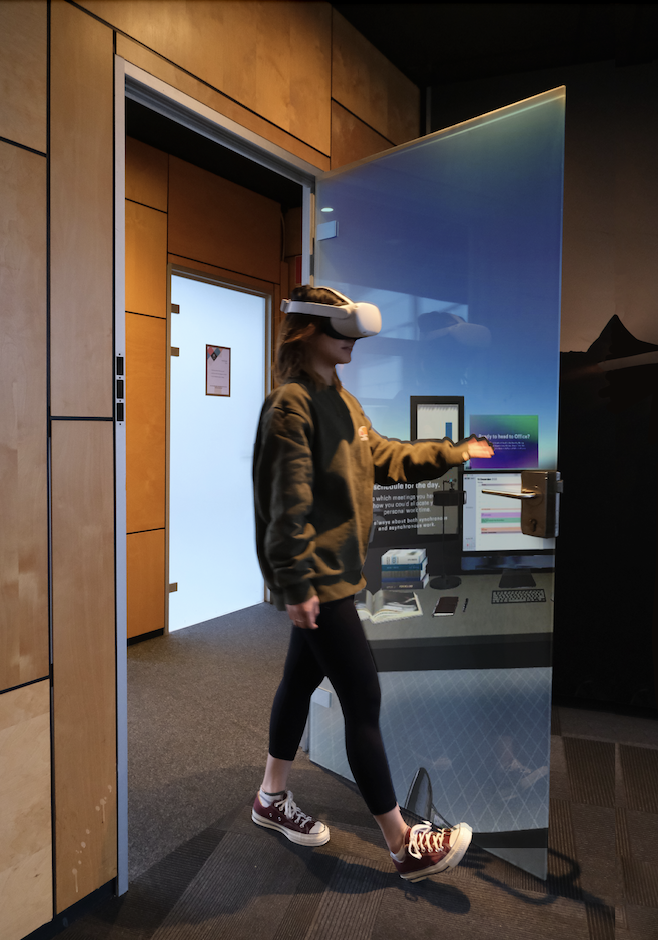
Project Introduction
Under the general theme of designing for sustainable productivity, the project hopes to enhance employees' positive work experience by increasing the immersion of telecommuting.
Because this is a project that explores near future possibilities, I used a modified VIP approach from Hekkert & Van Dijk (2011), which deconstructs the current context and the immersive experience, then proposes a possible design for future experiences. The design is entirely experience-oriented, grounded in context and enhanced by the choice of appropriate technology.
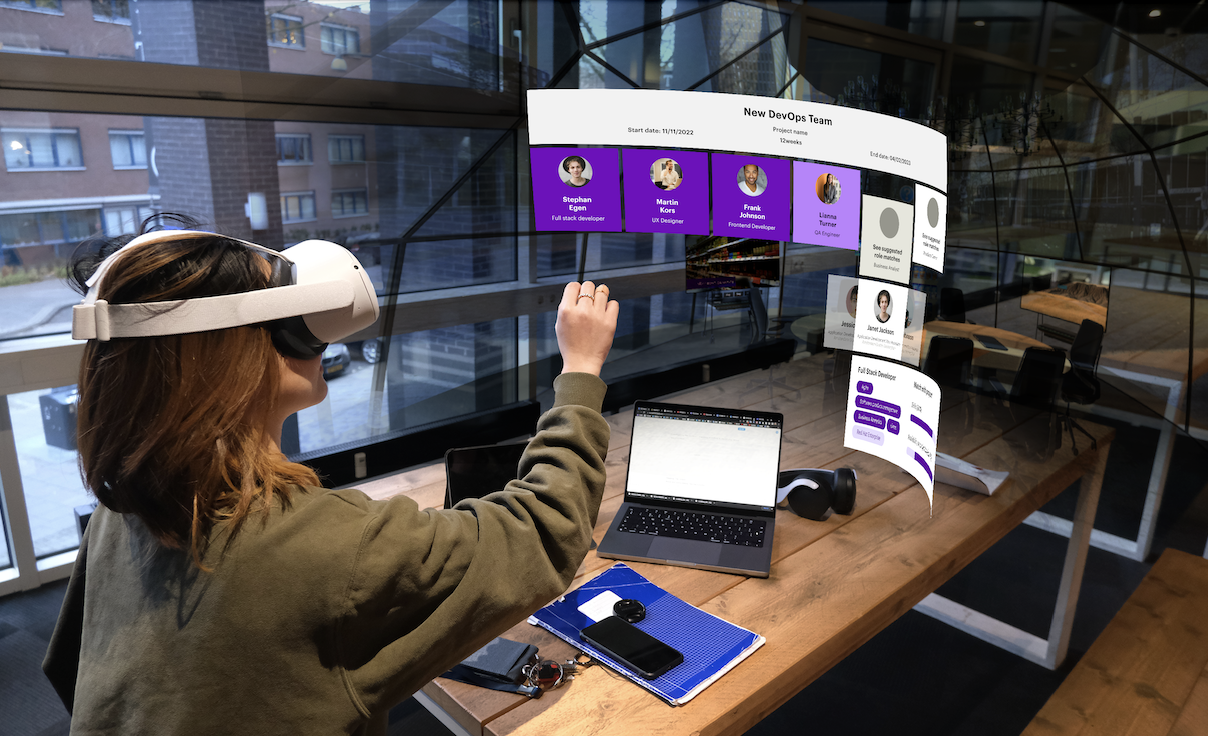
Product.
General Outcomes
The VR prototype demonstration and future scenario storyboard were further evaluated and discussed with eight participants. Not only did we validate its possible impact on shifting positive work mindsets, but we also identified the unique opportunities virtual reality presents for immersive experiences. The virtual office has the potential to create novel morning starts, create subtle interactions between people, and create a group environment of belonging.
Despite technical barriers preventing people from enjoying VR for longer, we could see a use case like this that bridges the future of telecommuting with the current situation.
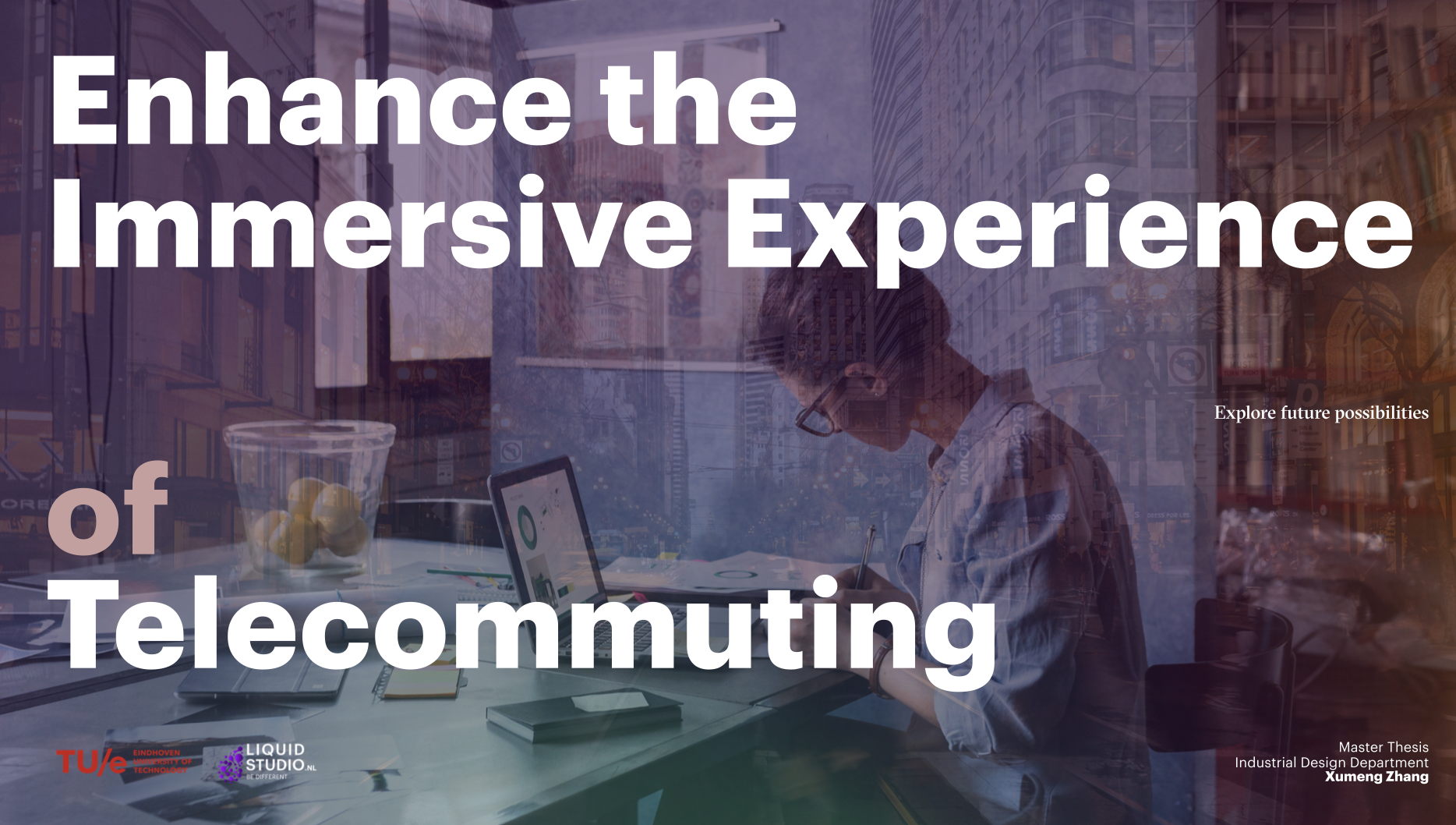
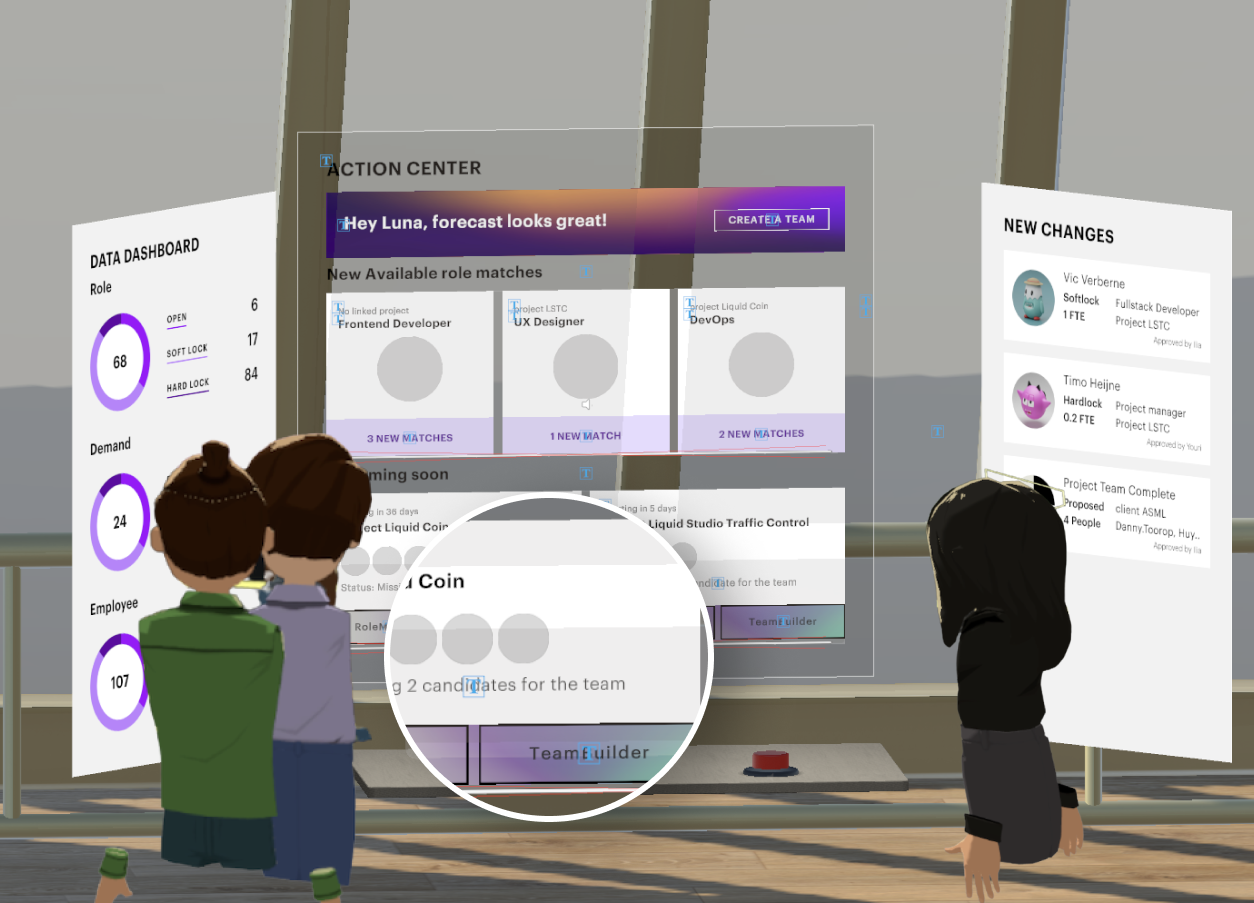

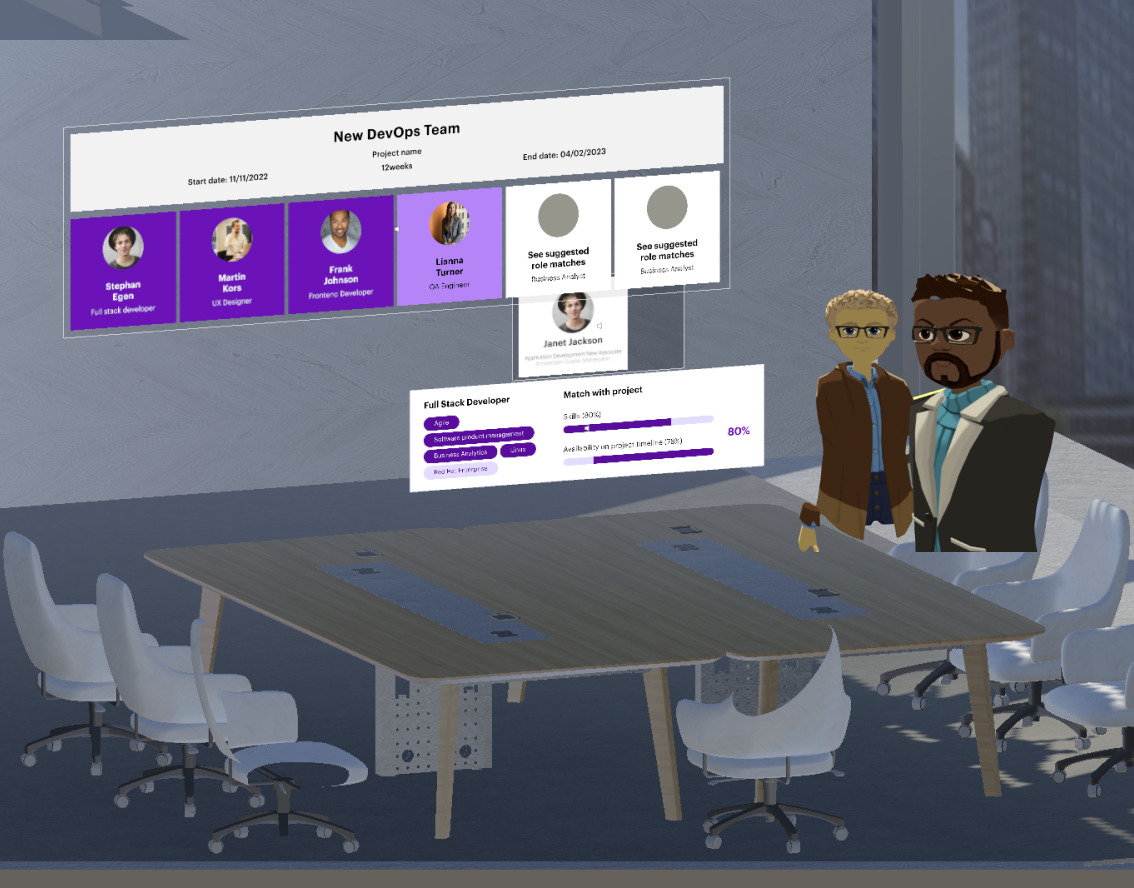
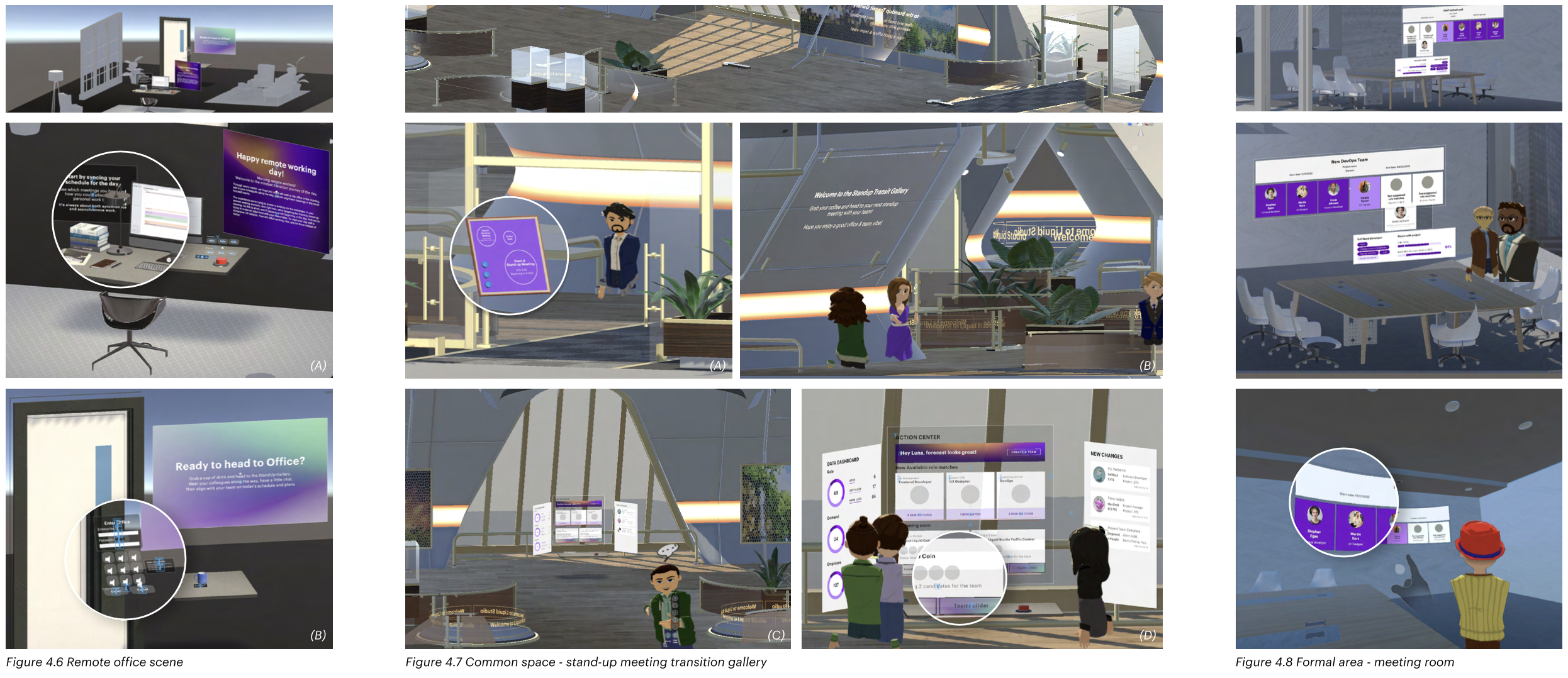
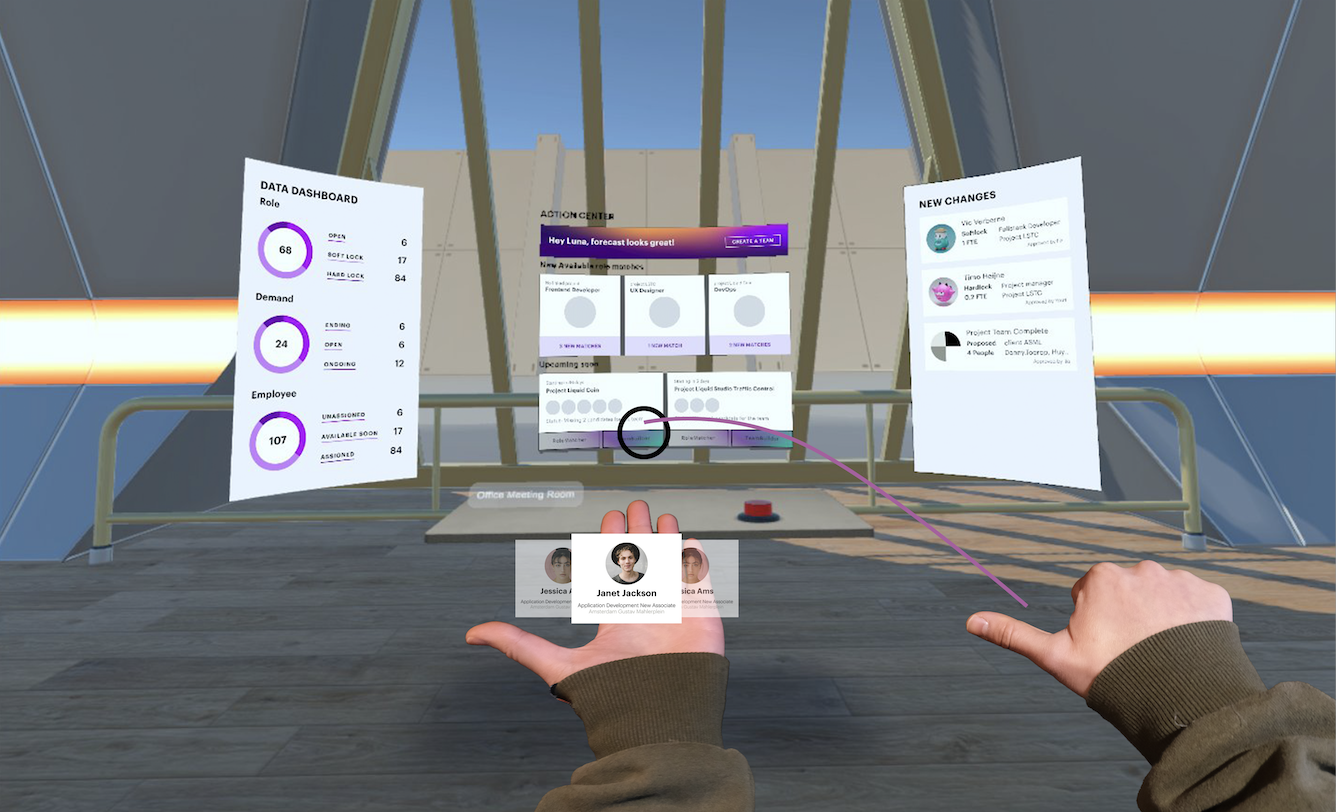
By deconstructing the 'old' office work experience, we uncover key factors and key scenarios that contribute to the work immersion. And determined that the work preparation period ending with the morning stand-up meeting as domain time for future context. This immersive experience should help people better experience the positive work mindset transition in the morning. There are varied levels of requirement for external incentive among four types of remote employees. Because we did not propose a design to improve a positive working attitude for a specific group of people, nor is it designed to solve a specific type of problem, but rather from the standpoint of overall experience, how to integrate some new technologies into life scenes and bring some possible stimuli and changes, this design is more biased towards design discussions and innovative designs in the near future. Not only hoping to construct nice working scenarios , but also to create a bridge between the present and the future.
Process.
Investigating context
The first phase of the project is to understand the 'old' office work scenarios and routines, and what factors create work immersion. Through interviews and journey mapping, I discovered the difference between remote work and office work, and how work immersion can be created differently at different stages of work. After opportunity analysis, here it is decided that the domain time of the future context design is the work preparation period. The design opportunity narrowed down to helping people achieve a positive work mindset shift through cognitive engagement with the new environments created by virtual reality. A statement is created, it defines an experience I hoped that interacting with the virtual space could provide for people: By joining and transitioning within the virtual environment, people could smoothly transition into a happy, positive working state of mind before their daily work begins. The second stage is to design future scenarios. A co-creation approach is used here so that the users of the product participate in defining the quality of the product and their own experience guidelines. During the workshop, the facilitator together with the users discussed how a virtual space could contribute to telecommuting. And they defined the human-product interaction and quality of this product, boiled down to four adjectives: simple, purposeful, novel, and familiar.
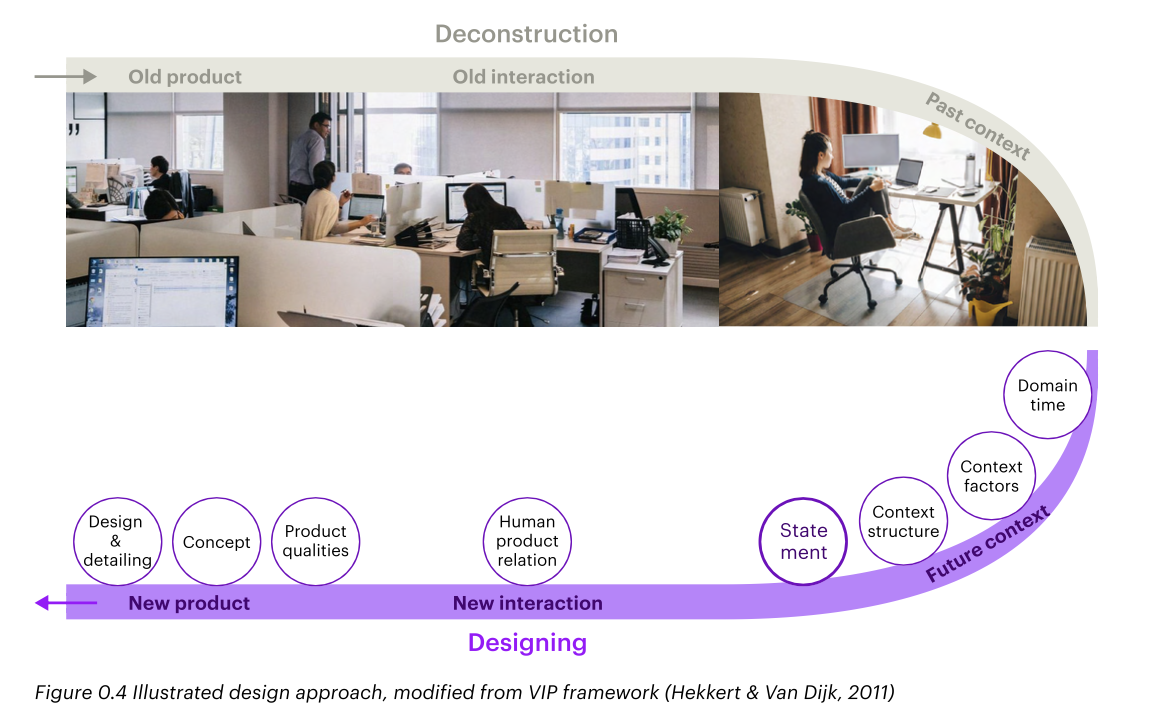
LEARNINGS.
It was a great experience for me to be able to work on this design for the future challenge. And it is also the first-ever personal project that is not problem-oriented but experience-oriented. I went from a pragmatic designer who identify pain points and design solutions to an idealistic designer who build future experiences from scratch. I got to understand how to design with innovation and change in mind, how to deconstruct a context and an experience, and how to recreating the experience in a future context. Through this project, I have further developed my interest in human-technology relation, context mapping and strategy design. And I have enriched my design realization skills by learning coding in Unity. This time, as both the UX/UI designer and Unity developer, I proudly made a VR application that many people experienced and showed great interest in its further development.
